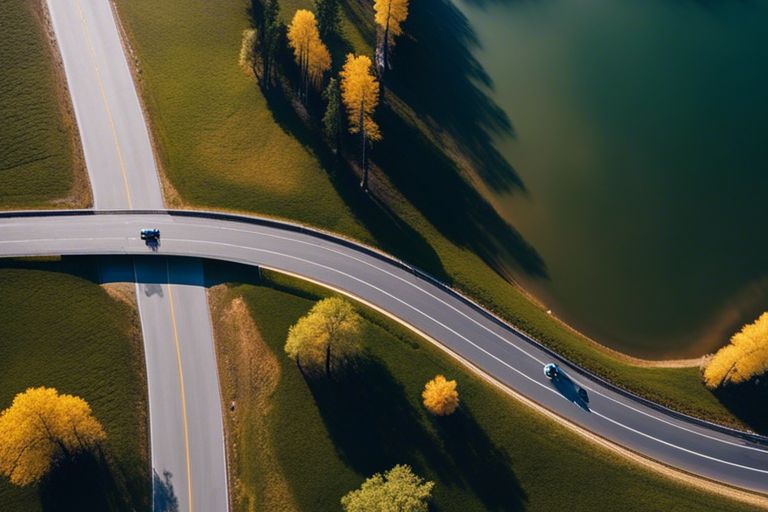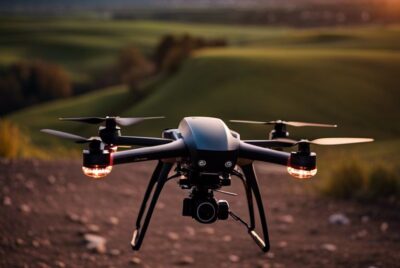“The Art of Revealing Scale – Using Drones to Capture Vast Landscapes”
Most drone photography enthusiasts are well aware of the incredible perspective and unique angles that drones offer, but what truly sets drone photography apart is its ability to capture vast landscapes with stunning detail and scale. In this article, we explore into the art of revealing scale through the lens of a drone, showcasing how these aerial devices have revolutionized the way we capture and appreciate the grandeur of our world’s natural wonders.
Technical Aspects of Drone Photography
For those delving into the mesmerizing world of drone photography, it is crucial to grasp the technical aspects that can make or break the quality of your aerial images. Understanding the capabilities and limitations of drones, as well as the intricacies of camera specifications and aerial settings, is essential for capturing stunning landscapes from above.
Understanding Drone Capabilities and Limitations
Any aspiring drone photographer must have a solid understanding of the capabilities and limitations of their drone. Drones come in various sizes and specifications, each with its own set of features and restrictions. Factors such as flight time, maximum altitude, wind resistance, and camera stability play a significant role in determining the quality of aerial shots that can be captured.
When operating a drone, it’s crucial to be aware of the environmental conditions that can affect its performance. Factors like weather conditions, signal interference, and battery life can impact the drone’s ability to fly and capture clear images. By familiarizing yourself with these limitations, you can better plan your aerial photography sessions and ensure the safety of your equipment.
Camera Specifications and Aerial Settings
The quality of a drone’s camera and the settings used during flight are paramount in achieving breathtaking aerial photographs. The camera specifications, including resolution, sensor size, and lens quality, directly impact the sharpness and clarity of images. Additionally, understanding how to adjust aerial settings such as aperture, shutter speed, ISO, and white balance can help you capture the landscape in the best possible light.
The right combination of camera specifications and aerial settings allows photographers to control aspects like motion blur, exposure, and color accuracy. By mastering these technical elements, you can elevate your drone photography skills and create visually striking images that showcase the vastness and beauty of landscapes from a unique perspective.

Composition Techniques for Vast Landscapes
Now, let’s research into the art of composing breathtaking shots of vast landscapes using drones. The composition plays a crucial role in capturing the grandeur and scale of these expansive environments. By employing specific techniques, photographers can create compelling imagery that truly showcases the beauty and magnitude of the landscape.
The Role of Perspective and Scale
Scale is a fundamental element in capturing vast landscapes with drones. By including objects of known size in the frame, such as trees, buildings, or people, viewers can better grasp the immense scale of the surroundings. Utilizing different heights and angles with the drone can also help emphasize the vastness of the landscape. Experimenting with perspective can create depth and dimension in the imagery, enhancing the viewer’s perception of scale.
Employing the Rule of Thirds from Above
When capturing vast landscapes with drones, employing the Rule of Thirds can aid in creating visually pleasing compositions. By dividing the frame into thirds both vertically and horizontally, photographers can strategically position key elements of the landscape along these lines or at their intersections. This technique helps draw the viewer’s eye into the scene and adds balance and interest to the composition.
Employing the Rule of Thirds from Above
Perspective is a powerful tool in capturing vast landscapes from above. By changing the altitude and angle of the drone, photographers can reveal different aspects of the landscape and create dynamic compositions. Experimenting with high and low perspectives can add drama and interest to the imagery, while showcasing the scale and beauty of the vast landscape.

Challenges and Solutions in Drone Landscape Photography
Dealing with Weather and Environmental Conditions
Despite the advancements in drone technology, weather and environmental conditions remain a significant challenge for drone landscape photography. Strong winds, rain, fog, and extreme temperatures can all impact the performance of the drone and the quality of the images captured. To combat these challenges, it is essential for drone photographers to carefully monitor weather forecasts and choose the right time of day and season to shoot.
Additionally, investing in drones with robust construction and weatherproofing can help mitigate the risks associated with adverse weather conditions. Using protective accessories such as rain covers and sunshades can also prolong the drone’s lifespan and ensure optimal performance in varying environments.
Managing Legal and Safety Considerations
Safety is paramount when it comes to drone landscape photography. As drones are becoming increasingly popular, regulations are also becoming more stringent to ensure the safety of airspace and people on the ground. It is crucial for drone photographers to familiarize themselves with local laws and regulations regarding drone use in their area.
Furthermore, obtaining the necessary permits and permissions before flying a drone in certain locations, such as national parks or private property, is essential to avoid legal complications. Adhering to safety protocols, such as maintaining visual line of sight with the drone and avoiding flying over crowds, can help prevent accidents and ensure a smooth and successful drone photography session.
When it comes to managing legal and safety considerations in drone landscape photography, it is essential to prioritize compliance with regulations and best practices to protect both the drone operator and the surrounding environment. Drone photographers must stay informed about evolving laws and safety guidelines to continue capturing breathtaking landscapes responsibly.
Post-Processing Drone Photography
Keep refining your drone photography skills by delving into the world of post-processing. This stage is where you can truly elevate your aerial images and bring out the full potential of the landscapes captured from above.
Enhancing Aerial Images with Software
Drone photography offers unique perspectives, but sometimes the raw images may need a bit of enhancement to truly shine. By utilizing software like Adobe Lightroom or Photoshop, you can adjust colors, contrast, exposure, and clarity to make your aerial shots pop. You can also correct any lens distortions that may occur due to the wide-angle perspective of drone cameras.
Experiment with different tools and techniques to enhance the details of your aerial images. Use features like sharpening to bring out the textures of the landscape or apply filters to create a specific mood or tone in your photos. Post-processing software allows you to fine-tune every aspect of your drone photography, making it a crucial step in the workflow.
Scaling the Final Image for Impact
Post-processing plays a key role in scaling the final image for maximum impact. By adjusting the composition, cropping, and aspect ratio of your aerial photos, you can highlight the vastness of the landscapes you’ve captured with your drone. This step is crucial in creating visually stunning images that convey the grandeur of the scenery from above.
With the right cropping and resizing techniques, you can draw the viewer’s eye to the most compelling elements of your aerial images. Whether you’re preparing your work for print or digital display, scaling the final image effectively can make a significant difference in how your drone photography is perceived.

Summing up
On the whole, using drones to capture vast landscapes has revolutionized how we perceive the world around us. The ability to reveal the scale and grandeur of nature from a unique vantage point is truly mesmerizing. Drones have allowed photographers and videographers to capture perspectives that were previously out of reach, providing a new appreciation for the vastness and beauty of our planet. The art of revealing scale through drone technology is not just about showcasing the enormity of landscapes but also about connecting us to the magnificence of our natural world in ways we have never experienced before.



